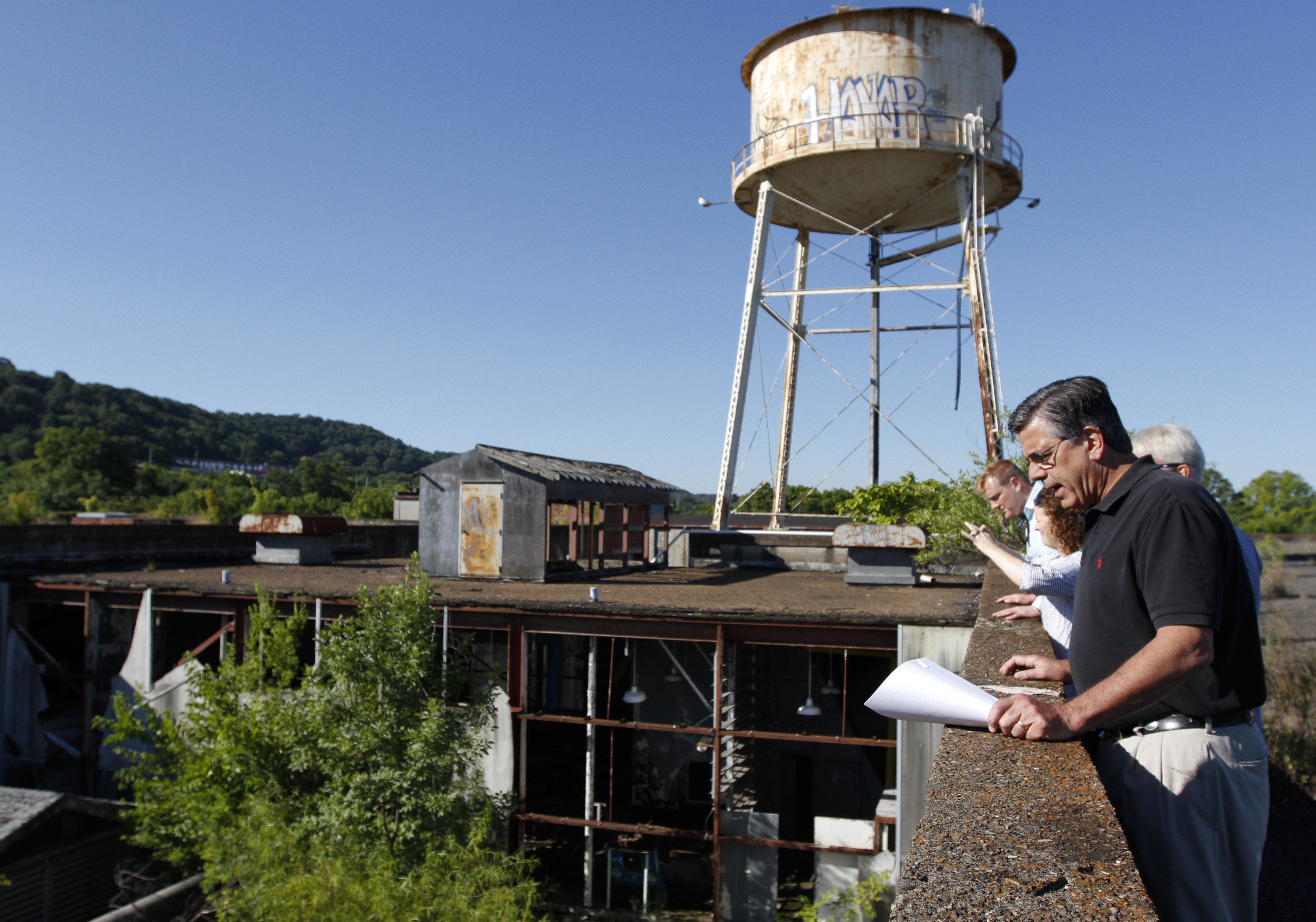One of the six new sites in Tennessee added to the National Historic Register this year is in one of downtown Chattanooga's former industrial centers.
The Tennessee Historical Commission has announced that Standard-Coosa-Thatcher Mills, located on South Watkins Street is now listed on the National Register, a designation that comes as good news to a developer of the site who hopes to convert it into residential housing.
St. Louis, Mo.-based development Tim Boyle says the designation is an important step in plans for the 300,000-square-foot industrial site.
Being placed on the National Register "provides additional wind" to the project, Boyle said.
Standard-Coosa-Thatcher Mills begin in 1916, when the first mill buildings were erected. Another mill and warehouse were added to the complex in 1920 and over the years more building changes and additions occurred at the complex and technology changed and the business grew.
Until 1922, the Standard, Coosa and Thatcher plants were separate operations. The cotton industry of the south was an important factor in the economic and commercial growth of the region and the Standard-Coosa-Thatcher Mills are a significant example of this. The company's yarns and threads were sold in 20 sales offices throughout the U.S. As the apparel industry changed over the years, production at the mills slowed and in 2003 the mills shut down for good, according to commission officials.
The Chattanooga mill is one of six Tennessee sites have been added to the National Register of Historic Places, the nation's official list of cultural resources worthy of preservation. It is part of a nationwide program that coordinates and supports efforts to identify, evaluate and protect historic resources. The Tennessee Historical Commission, as the State Historic Preservation Office, administers the program in Tennessee.
The other sites recently added to the National Register of Historic Places include:
Grand Ole Opry House While the Grand Ole Opry House in Nashville is recognized as an important country music venue today, it is not usually thought of as being historic. Constructed 1972-1974, the performance hall and broadcast studio was listed in the National Register for its exceptional national importance because of its impact in popular culture, entertainment and the communications industry. The largest radio and television broadcast studio in the world when completed, the building represents a new era in country music, when the industry was becoming more mainstream and using new sounds, marketing and production techniques. The building continues to be used for shows and broadcasts.
Brown Farm The 199-acre Brown Farm in the community of Lamar in Washington County is an important representation of the region's agricultural history. A smokehouse, springhouse, mill, cemetery, post office and barns are included as part of the agricultural history of the farmstead. The Brown family represents the early settlement patterns in upper East Tennessee. They first came to the area in the 1770s and continued to farm and develop the property over many years. Constructed circa 1845, the main house is a good example of a Greek Revival farmhouse with later additions. The two-story solid brick building is embellished with a corbelled brick cornice and entrances with sidelights and transoms.
College Hill Historic District Boundary Increase, North Washington Historic District and Dunbar Carver Historic District Three historic districts in Brownsville, Haywood County, were listed in the National Register as part of the city's efforts to recognize their historic resources. The College Hill Historic District was originally listed in the National Register in 1980 with 83 properties included. A revised nomination doubled the number of properties and documented later 20th century residences that are an important part of the community's architectural heritage. The North Washington Historic District is comprised of around 150 properties and includes houses, commercial buildings, government buildings and religious buildings. Although most buildings in the district were constructed around 1900, the ages of buildings range from 1830 to 1964. Twenty-six properties in the Dunbar-Carver Historic District represent the African American heritage of Brownsville. In addition to houses, two commercial buildings and a school are included in the district.
"From an East Tennessee farmstead settled in the 1770s, to new and expanded recognition for Brownsville's historic neighborhoods, these recent National Register listings showcase the diversity of our state's historic places," State Historic Preservation Officer and Executive Director of the Tennessee Historical Commission Patrick McIntyre said. "As Nashville focuses preservation efforts on the physical places associated with its musical heritage, the listing of the c. 1974 Grand Ole Opry House is a reminder that iconic places from the recent past are also becoming historic."


